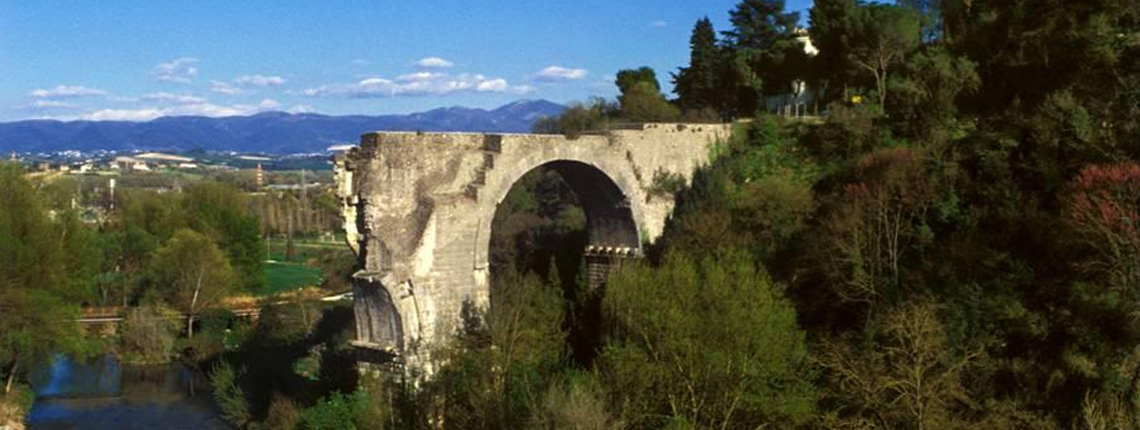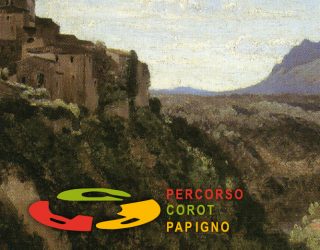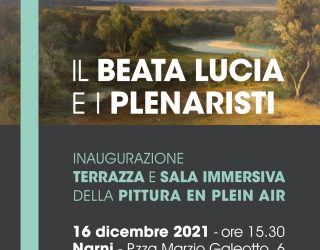
OPEN-AIR MUSEUM OF PLEIN AIR PAINTERS
This itinerary is made up of several locations along the River Nera valley following in the footsteps of the en plein painters.
The idea of the Open-Air Museum in the Terni valley, is to re-evoke and show the painters’ works through photographic reproductions, very often where the artists painted them two centuries beforehand. The idea is to gather together the great heritage of works currently dispersed in numerous private collections and preserved in around 70 museums the world over.
The visitor can relive the emotion experienced by the artists. In fact, in many places the landscape has remained intact and still retains all the charm and magic of that era.
The Open-air Museum of Plein Air Painter (MDP) is divided into four sections:
ITINERARY
An itinerary on foot covering the places where the artists painted:
Narni and its surroundings
The ruins of the Augustus Bridge
Piediluco Lake
The village of Papigno and its woods
Marmore Waterfalls (lower and higher views)
The itinerary is structured in different parts and features equipped rest areas with information ‘totems’ and plaques showing photographic reproductions of paintings and historical artistic information about the locations.
The route was inaugurated in October 2018.
MULTIMEDIAL
In the Infopoint ticket office at the Lower Belvedere of the Marmore Waterfalls, there are two dedicated rooms where you can see some videos on large monitors illustrating the activity of the Plenarist painters in the Terni valley, works by the famous artist Jean Baptiste Camille Corot and the location of paintings in museums the world over.
Here there is also a 6D cinema where thanks to digital editing techniques and dynamic and multi-sensorial effects guaranteed by the technology present in the two rooms, it is possible to experience a true and proper virtual journey, gliding over landscapes and entering inside the paintings executed by the painters in the Terni basin between the late 1700s and early 1800s.
Ideation and curatorship: Franco Passalacqua
Realization: Federico Nannurelli (Municipality of Terni),Fabrizio Casaglia (Municipality of Terni), Roberto Nini (Municipality of Narni)
Architectural aspects: Carlo Fioretti (Municipality of Terni)
Tourist management: Umbria Experience Video: Euromedia SRL, 6 Aprileaudiovisual
Staging: Stefano Ghigarelli, Franco Passalacqua, Gianluca Perissinotto
COROT PAPIGNO PATH
These are two circular hiking trails. A shorter one within the town which takes about 30 minutes and a longer one in the area surrounding the village which takes about 50 minutes. The two trails coincide at a point of departure / arrival. The itineraries allow you to discover and see the reproductions of Corot’s paintings, finding in some places the precise spot in which the painter made his works. Further you can get to know anecdotes and information about the life of the great master and compare in some points the paintings of other contemporary painters. About 50 information signs are located along the routes.
Camille Corot stayed in Papigno from July to September 1826 during his first trip to Italy. From Papigno he went to the surrounding places to paint “en plein air”. He created a considerable number of paintings and drawings at the Marmore Falls, on Piediluco lake and near the ruins of the Augustus Bridge in Narni. In Papigno he painted 8 oil landscapes and 3 drawings that highlight the magical atmosphere of the village. Also in Papigno he created two portraits of a young man and a young Papigno woman with her distaff.
THE TERRACE OF THE OPEN-AIR PAINTERS AND THE IMMERSIVE MULTIMEDIA EXHIBITION AT THE “BEATA LUCIA” IN NARNI
In the historical 1700 building of the former “Beata Lucia” orphanage in Piazza Marzio Galeotto in Narni there is an extensive and magnificent terrace which has been renovated and used to admire the landscape overlooking the gorges of the Nera river which was also the theater of artistic activity of some painters of the open-air between 700 and 800.
This is a place of beauty, meditation and contemplation that at first sight causes a real heart quake.
The observation dominates a natural landscape that was the subject of paintings by Bidauld, Corot, Chauvin and other artists who painted this landscape full of mystery and magic, also representing the Abbey of San Cassiano where many painters placed themselves for portray the ruins of the Augustus Bridge from life.
In the Terrace there are explanatory signs on the artistic work of the open-air painters and their activity in the Narni area.
The immersive multimedia exhibition, Narni the painted dream in the enchanted valley, is located in a large room of the Palace and allows you to enter, immerse yourself in the paintings and landscapes. An engaging and exciting sensory experience.
In the Palazzo del Beata Lucia there is a conference room where it is possible to see documentaries dedicated to the theme of the open air. In addition to this it is possible to consult a library with volumes that deal with the development of open-air painting that was carried out in Italy between 1700 and 1800.












